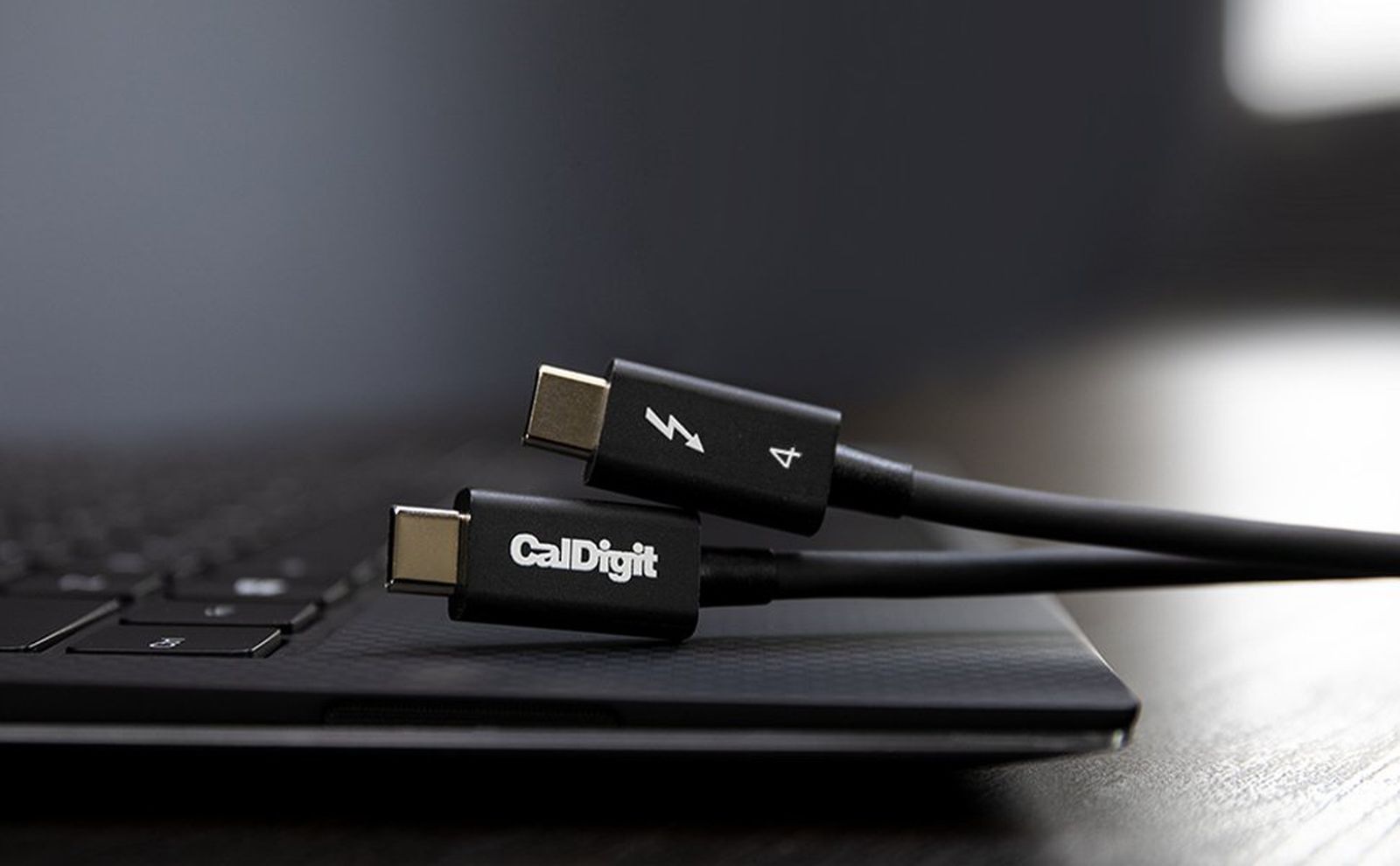PSA: CalDigit have released their active 2m Thunderbolt 4 cable ($80).
https://www.caldigit.com/thunderbolt-4-usb-4-cable
These ones are among the first ones released, and are almost identical to their TB3 ones, offering full 40Gb, 100W Power Delivery.
Question most will wonder is:
What are
all the spec differences between the best 2m length active TB3 vs TB4 cables? (CalDigits site doesn't make it completely clear on something like a table, unfortunately.) So AFAICT, the differences are the following:
1. TB4 ones offer so-called 'universal' compatibility with
all USB speeds (including upcoming 40Gb vanilla USB4.2).
TB3 active 2m TB3 cables in USB-mode only do 0.5Gb USB 2 speed. No more guessing max speed!
2. TB4 support all/most alt-modes. Potentially very useful as no more guessing if the cable will do anything!
3. TB4 ones do 100W power delivery over both TB3/4
and vanilla USB-C connections. Whereas TB3 ones only do 100W over TB3/4 connections.
4. TB4 ones do up to 1x
8K display at 60Hz. TB3
can't do 8K displays at all, but do up to 1x 5K/6K display at 60Hz.
5. TB4 ones
minimum spec required is PCIe 3.0 at 32Gbps, thus 3GBps (that's bytes not bits!) maximum connection speeds. TB3's minimum spec required was PCIe 3.0 at 16Gbps, but can also optionally do 32Gbps.
6. TB4 ones offer Intel VT-d DMA protection, for data security, but TB3 ones don't. (Google it!)
7. (unconfirmed?) TB4 ones support upcoming 4x TB4 port docks, but TB3 ones don't (guessing due to point 4 PCIe issue, above?).
8. (unconfirmed?) TB4 ones have a smaller connector on each end of the cable, if that's important to you.
In table form:
| TB4 | TB3 |
| 1. USB speeds | all, up to 40Gb | up to 0.5Gb (USB 2.0) |
| 2. Alt-modes | all | some |
| 3. 100W max PD | TB3/4 and USB-C devices | TB 3/4 devices only |
| 4. Displays (max.) | 1x 8K 60Hz | 1x 5/6K 60Hz |
| 5. Data connection (min.) | PCIe 3.0 32Gbps | PCIe 3.0 16Gbps (32Gbps optional) |
| 6. Intel VT-d DMA protection | yes | no |
| 7. 4x TB4 port dock support | yes | no |
| 8. Cable connector smaller | yes | no |
..................
Which then comes around to the big question with optical TB3 cables, previously asked but cannot get an answer on:
What USB speeds/alt-mode options/other TB4 things do optical TB3 cables offer? Obviously they won't do the power, but do they match everything else that these new copper 2m active TB4 cables offer?



